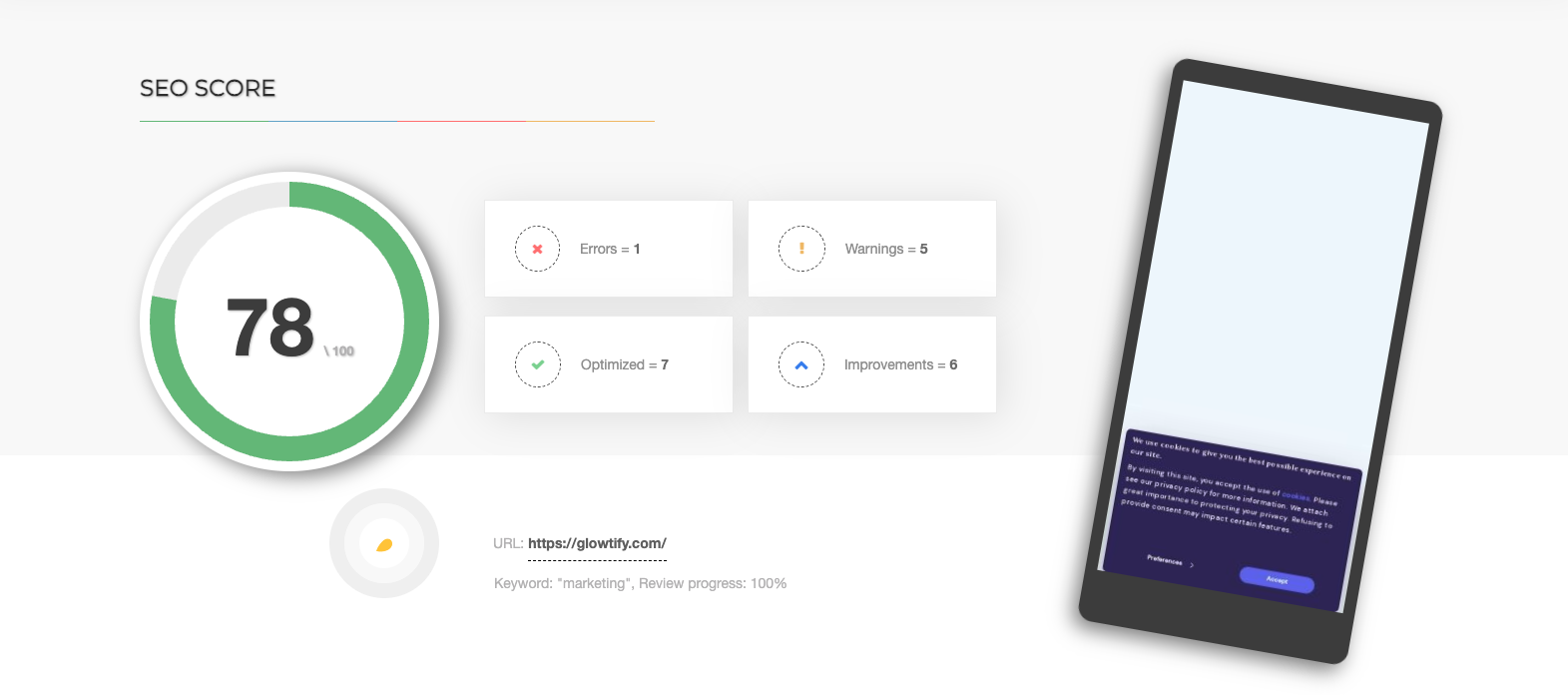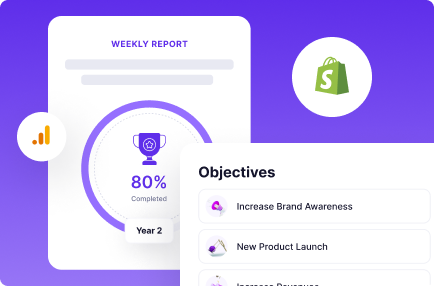Table of Contents
In the ever-evolving digital world, eCommerce has become a battleground where businesses fiercely compete for consumers’ attention. As more and more consumers turn to online shopping, businesses must find innovative and effective strategies to attract, engage, and retain these digital customers. Success in this arena is strongly tethered to implementing powerful marketing strategies that resonate with your audience and outperform the competition. With a focus on practical, result-driven methods, this article aims to provide you with an in-depth understanding of the top-notch marketing practices designed to turbocharge your ecommerce business’s growth.
Successful marketing is not just about broadcasting your message to a broad audience; it’s about forging meaningful connections that catalyze conversions. It demands a thorough understanding of your audience, speaking their language, delivering value, and meeting their needs in real time. In the vast and competitive digital marketplace, your business must stand out, engage customers effectively, and provide an unmatched user experience. This involves a judicious blend of creativity, analytics, and keen customer understanding. This guide aims to prepare you for this task, offering a comprehensive perspective on successful ecommerce marketing strategies. With the knowledge gained from this article, you’ll be armed with the tools needed to chart a unique path for your business, cut through the ecommerce noise, and steer your venture toward sustained growth and success.
1. Engage Visitors with Live Chat Support
Engaging visitors with live chat support is a game-changer for ecommerce businesses. According to a study by Forrester, 44% of online consumers say that having questions answered by a live person during an online purchase is one of the most important features a website can offer. Live chat support allows businesses to provide real-time assistance, answer customer queries, and address concerns promptly.

Not only does live chat support improve customer satisfaction, but it also boosts conversions. A report by Econsultancy revealed that live chat has the highest customer satisfaction levels compared to other customer service channels, with 73% of customers being satisfied with their live chat experience. Additionally, the study found that businesses that implemented live chat on their websites experienced an average of 48% increase in revenue per chat hour.
Live chat support offers a personalized and convenient way for customers to interact with businesses, resulting in higher engagement and improved customer loyalty. With the ability to assist customers in their buying journey, resolve issues in real time, and provide recommendations, live chat support plays a vital role in creating a positive shopping experience that can directly impact a business’s bottom line.
2. Anticipate and Capitalize on Future Sales Opportunities
Anticipating and capitalizing on future sales opportunities is a strategic approach that can significantly impact the growth of ecommerce businesses. By analyzing customer data, market trends, and purchasing patterns, businesses can gain valuable insights into upcoming sales opportunities. This proactive approach allows them to tailor their products, marketing campaigns, and promotions to meet customer demand effectively.
Data-driven decision-making is key in anticipating sales opportunities. According to a survey by McKinsey, companies that leverage customer analytics and data-driven insights are more likely to outperform their competitors in terms of sales growth and profitability. By utilizing advanced analytics tools, businesses can identify emerging trends, predict customer behavior, and make informed decisions to stay ahead of the competition.
Furthermore, capitalizing on future sales opportunities requires agility and adaptability. Businesses should have the ability to quickly respond to market changes and adjust their strategies accordingly. This can involve introducing new product lines, targeting specific customer segments, or leveraging emerging sales channels. By being proactive and agile, businesses can seize opportunities before their competitors and achieve sustained growth in the ever-evolving ecommerce landscape.
3. Boost Your Brand With Content Marketing
Content marketing is a powerful strategy for boosting brand awareness and establishing a strong online presence. According to the Content Marketing Institute, 91% of B2B marketers and 86% of B2C marketers utilize content marketing as part of their overall marketing efforts. By creating and sharing valuable, informative, and engaging content, businesses can position themselves as industry leaders and build trust with their target audience.
Effective content marketing goes beyond promotional content. It involves creating content that addresses the pain points, challenges, and interests of the target audience. By providing valuable information and insights, businesses can attract and engage potential customers, nurturing them through the buyer’s journey. A study by Demand Metric found that content marketing generates three times as many leads as traditional outbound marketing, but costs 62% less.

Content marketing also plays a crucial role in search engine optimization (SEO). Search engines favor websites that consistently produce high-quality content. By optimizing content with relevant keywords and providing valuable information, businesses can improve their search engine rankings and drive organic traffic to their website. According to HubSpot, companies that blog receive 97% more links to their website, which further enhances their online visibility and brand authority.
4. Personalize the Shopping Experience for Customers
Personalizing the shopping experience for customers is a highly effective strategy that can significantly impact customer satisfaction and drive sales. According to a study by Epsilon, 80% of consumers are more likely to make a purchase when brands offer personalized experiences. By tailoring the shopping experience to individual customer preferences and needs, businesses can create a sense of exclusivity and enhance customer loyalty.
One way to personalize the shopping experience is by leveraging customer data. By collecting and analyzing data such as purchase history, browsing behaviour, and demographic information, businesses can gain insights into individual preferences. This allows them to offer personalized product recommendations, customized promotions, and targeted marketing campaigns. According to Accenture, 91% of consumers are more likely to shop with brands that provide relevant offers and recommendations.
Furthermore, personalization goes beyond product recommendations. It extends to the overall user experience, including website design, navigation, and communication. By offering personalized greetings, providing tailored content, and simplifying the purchasing process, businesses can create a seamless and enjoyable shopping experience. A study by Segment found that 44% of consumers are likely to become repeat buyers after a personalized shopping experience.
5. Harness User-Generated Content for Brand Promotion
Harnessing user-generated content (UGC) for brand promotion is a valuable strategy that can significantly impact brand visibility, credibility, and customer engagement. User-generated content refers to any form of content, such as reviews, testimonials, social media posts, and photos, created by customers or users of a product or service.
According to a survey by Stackla, 86% of consumers believe that user-generated content is a good indicator of a brand’s quality and authenticity. By actively seeking and showcasing UGC, businesses can tap into the power of social proof, as customers tend to trust and relate to content created by their peers more than traditional marketing messages.
UGC also has the potential to reach a wider audience. When customers share their positive experiences with a brand through UGC, it can amplify the brand’s reach and attract new customers. In fact, a study by Ipsos found that UGC is 9.8 times more impactful at driving purchase decisions than influencer content.
Furthermore, UGC encourages customer engagement and participation, fostering a sense of community around the brand. When businesses feature UGC on their website, social media platforms, or in marketing campaigns, it not only promotes the brand but also acknowledges and appreciates its customers. This can lead to increased brand loyalty and advocacy.
6. Boost Your Online Visibility with SEO
Boosting your online visibility with SEO (Search Engine Optimization) is essential for ecommerce businesses to increase organic traffic, improve search engine rankings, and drive growth. According to a study by BrightEdge, organic search drives over 50% of website traffic, making SEO a critical component of a successful online marketing strategy.
Optimizing your website for search engines involves various techniques, including keyword research, on-page optimization, link building, and technical optimization. By conducting thorough keyword research and strategically incorporating relevant keywords into your website content, meta tags, and URLs, you can improve your chances of ranking higher in search engine results pages (SERPs).

Furthermore, SEO is not only about keywords. Search engines prioritize websites that provide a positive user experience. This means having a fast-loading website, easy navigation, mobile responsiveness, and high-quality, relevant content. By optimizing these elements, you can improve user engagement, reduce bounce rates, and increase the likelihood of higher search rankings.
Investing in SEO can yield long-term benefits for ecommerce businesses. According to a study by Chitika, the first organic search result on Google receives approximately 33% of the traffic, while the second position receives around 18%. By appearing higher in search results, you can attract more qualified traffic, increase brand visibility, and ultimately drive more conversions.
7. Reduce Abandoned Carts for Improved Conversions
Reducing abandoned carts is a critical objective for ecommerce businesses aiming to improve conversions and maximize revenue. According to a study by Baymard Institute, the average documented online shopping cart abandonment rate is approximately 69.57%. However, implementing effective strategies can help mitigate this issue and drive higher conversions.
One of the primary reasons for cart abandonment is unexpected costs, such as shipping fees or taxes. By displaying transparent pricing information and offering free or discounted shipping options, businesses can reduce cart abandonment rates. A survey by Statista found that 60% of respondents abandoned their carts due to high extra costs.
Another effective strategy is to implement remarketing campaigns. By using tools like email or targeted ads, businesses can remind customers of their abandoned carts and provide incentives to complete the purchase. According to a study by SaleCycle, nearly 46% of cart abandonment emails are opened, and approximately 13% of those emails lead to a recovered sale.
Streamlining the checkout process is also crucial for reducing cart abandonment. Simplifying the steps, minimizing form fields, and offering guest checkout options can make the process more convenient and less time-consuming for customers. A study by Nielsen Norman Group found that reducing the checkout process from four steps to one can lead to a 66% decrease in cart abandonment.
8. Increase Sales through Product Upselling
Upselling is a powerful strategy that can boost revenue and maximize the value of each customer transaction. Upselling involves offering customers a higher-priced or upgraded version of the product they are considering or adding complementary products to their purchase. According to a study by PredictiveIntent, upselling techniques can result in an average revenue increase of 10-30% per customer.
One effective approach to upselling is to highlight the additional features or benefits that come with the upgraded product. By showcasing how the higher-priced option can better meet the customer’s needs or provide enhanced value, businesses can persuade customers to make a larger purchase. Additionally, offering bundled deals or package options can incentivize customers to choose a more comprehensive package, resulting in increased sales.

Upselling not only increases revenue per transaction but also improves customer satisfaction. When done correctly, upselling can lead to a better overall customer experience by offering tailored solutions and options that align with their needs. A study by Accenture found that 91% of customers are more likely to shop with brands that provide relevant offers and recommendations, indicating the importance of personalized upselling approaches.
It’s important to note that upselling should be done in a customer-centric and ethical manner. The focus should be on genuinely adding value to the customer’s purchase rather than pressuring or tricking them into buying more. By taking a customer-focused approach and providing transparent information, businesses can build trust, foster long-term customer relationships, and increase sales through successful upselling strategies.
9. Enhance Brand Engagement with Instagram Integration
Enhancing brand engagement through Instagram integration is a valuable strategy for ecommerce businesses to connect with their target audience and build a strong brand presence. With over 1 billion active users worldwide, Instagram offers a highly visual and interactive platform for businesses to showcase their products, engage with followers, and drive customer loyalty.
By integrating Instagram into their ecommerce strategy, businesses can leverage user-generated content (UGC) and influencer collaborations to amplify their brand reach. UGC, such as customer photos or reviews, allows businesses to showcase real-life experiences with their products, building trust and authenticity. According to a study by Adweek, UGC on Instagram generates 4.5 times more engagement than branded content, demonstrating the power of user-generated content in driving brand engagement.
Furthermore, Instagram provides various interactive features, such as Stories, live videos, and polls, which allow businesses to directly engage with their audience in real-time. By utilizing these features, businesses can conduct product demonstrations, Q&A sessions, or exclusive behind-the-scenes content, fostering a sense of connection and community with their followers. According to Instagram, 90% of accounts follow a business on the platform, indicating the high potential for brand engagement and customer interaction.
10. Reach Customers Instantly with Text Message Campaigns
Text messages have an incredibly high open rate, with studies showing that 98% of SMS messages are read within minutes of being received. This makes it a powerful channel for delivering time-sensitive offers, promotions, and important updates directly to customers’ mobile devices.
Text message campaigns allow businesses to reach customers in a highly personalized and targeted manner. By segmenting their customer base and tailoring messages based on preferences, purchase history, or demographics, businesses can deliver relevant content that resonates with recipients. This level of personalization has been proven to significantly increase engagement and conversion rates.
Moreover, text message campaigns offer a convenient and frictionless way for customers to take action. By including clear calls-to-action and providing clickable links within the text messages, businesses can direct customers to their online store, specific product pages, or exclusive offers. This streamlined user experience eliminates barriers and encourages immediate response and conversions.
11. Grow Your Email List for Effective Marketing
Email marketing remains one of the most effective channels for engaging with customers and driving conversions. According to a study by DMA, for every $1 spent on email marketing, the average return on investment (ROI) is $42. This demonstrates the significant potential of email marketing in driving revenue.
There are various tactics businesses can employ to grow their email list. One effective strategy is to offer valuable incentives in exchange for email sign-ups. This can include exclusive discounts, free resources, or access to members-only content. By providing something of value, businesses can encourage website visitors to willingly share their email addresses.

Another approach is to optimize lead capture forms throughout the customer journey. Placing lead capture forms strategically on landing pages, blog posts, and checkout pages allows businesses to capture email addresses at different touchpoints. Additionally, leveraging pop-up or slide-in forms with targeted messaging can effectively capture the attention of visitors and increase conversion rates.
Furthermore, social media can be a powerful tool for growing your email list. By promoting your email newsletter or special offers on platforms like Facebook, Instagram, or Twitter, businesses can reach a wider audience and attract new subscribers. Integrating sign-up forms directly within social media profiles or running targeted ad campaigns can further enhance the growth of your email list.
12. Improve Email Campaigns for Better Results
Improving email campaigns is crucial for ecommerce businesses to achieve better results and maximize the effectiveness of their email marketing efforts. With the average office worker receiving 121 emails per day, standing out in the inbox and delivering compelling content is essential. Here are some key strategies to enhance your email campaigns and drive better results.
Segmentation is a powerful tactic to improve email campaign performance. By dividing your subscriber list into distinct segments based on factors such as demographics, purchase history, or engagement level, you can tailor your email content and offers to each segment’s specific needs and interests. According to MailChimp, segmented email campaigns result in a 14.31% higher open rate and a 100.95% higher click-through rate compared to non-segmented campaigns.

Personalization is another key element for effective email campaigns. By using the recipient’s name, sending personalized product recommendations, or including dynamic content based on their past interactions, businesses can create a more engaging and relevant experience. A study by Experian found that personalized email subject lines can increase open rates by 26%. Investing in personalization tools and leveraging customer data can significantly improve the performance of your email campaigns.
In addition, optimizing the design and mobile responsiveness of your emails is vital. The majority of email opens now occur on mobile devices, so ensuring that your emails are visually appealing, easy to read, and fully responsive across different screen sizes is essential. According to Litmus, 46% of consumers will delete emails that don’t display well on their mobile devices. By prioritizing mobile-friendly design, you can ensure a seamless experience for your subscribers and maximize engagement.
13. Drive Targeted Traffic with PPC Campaigns
Driving targeted traffic with PPC (Pay-Per-Click) campaigns is a highly effective strategy for businesses looking to reach their desired audience and increase website traffic. PPC advertising allows businesses to display targeted ads on search engines or social media platforms and pay only when users click on their ads. Here are some key insights and tactics to drive targeted traffic through PPC campaigns.
One of the key benefits of PPC campaigns is the ability to target specific keywords and demographics. By conducting thorough keyword research and utilizing audience targeting options, businesses can ensure their ads are shown to users actively searching for relevant terms or fitting specific criteria. This targeted approach increases the chances of reaching qualified leads and driving conversions.
Furthermore, PPC campaigns offer flexibility and control over budget allocation. Businesses can set daily or campaign budgets, monitor ad performance, and adjust bids to optimize their return on investment (ROI). With real-time data and analytics, businesses can continuously refine their campaigns to improve targeting, ad copy, and landing page optimization for maximum results.
According to a study by WordStream, businesses earn an average of $2 in revenue for every $1 spent on Google Ads. This highlights the potential profitability of PPC campaigns when executed strategically. By leveraging keyword research, precise targeting, and ongoing optimization, businesses can drive targeted traffic, increase visibility, and achieve their marketing goals.
14. Expand Your Reach by Selling on Marketplaces
Marketplaces offer a vast customer reach that can be challenging to achieve through individual websites alone. According to Statista, Amazon had over 2.5 billion visits in June 2021. By listing products on popular marketplaces, businesses can instantly expose their offerings to a large pool of potential customers. This increased visibility can lead to higher sales and brand exposure.
Additionally, marketplaces often have established trust and credibility among consumers. Customers are more likely to make purchases on well-known platforms with robust buyer protection policies. Selling on reputable marketplaces provides an added layer of trust, which can help businesses attract new customers and build their brand reputation.
Moreover, marketplaces provide a simplified selling process, handling many aspects such as payment processing, shipping logistics, and customer support. This allows businesses to focus on product development, marketing, and growth strategies, rather than managing every operational detail. By leveraging the infrastructure and support provided by marketplaces, businesses can streamline operations and scale their sales more efficiently.
15. Collaborate with Influencers for Effective Marketing
Collaborating with influencers is a powerful marketing strategy for ecommerce businesses. Influencers have a loyal following and can effectively promote products to their audience, generating brand awareness and driving conversions. By partnering with influencers whose audience aligns with your target market, you can tap into their influence and leverage their authentic content to reach a wider audience.

According to a study by Nielsen, 92% of consumers trust recommendations from individuals over traditional advertising. Influencer collaborations provide a personal and relatable touch that resonates with consumers, making them more likely to make a purchase. Additionally, influencer partnerships can boost your brand’s online visibility, generate valuable user-generated content, and improve search engine rankings. By harnessing the power of influencers, ecommerce businesses can amplify their message, increase engagement, and achieve significant marketing results.
Conclusion
These top 20 best ecommerce marketing strategies offer valuable insights and tactics to boost your online business’s growth. To maximize the effectiveness of these strategies, consider leveraging Glowtify, a powerful marketing software designed to drive eCommerce success. With Glowtify, you can streamline your marketing efforts, gain valuable insights, and track the performance of your campaigns. From engaging visitors with live chat support to driving targeted traffic through PPC campaigns, Glowtify offers a comprehensive solution to optimize your marketing initiatives and achieve remarkable results. Take advantage of Glowtify’s user-friendly interface and data-driven approach to supercharge your ecommerce growth and propel your business to new heights.
Don’t miss out on the opportunity to accelerate your success. Sign up for Glowtify today and unleash the full potential of your ecommerce marketing strategies. With its robust features, actionable insights, and data-backed goals, Glowtify is your go-to solution for driving growth, boosting conversions, and achieving long-term success in the competitive ecommerce landscape.

Want more SEO traffic?
Discovering the secret to increasing your website’s traffic could be as simple as accessing this Free SEO analyzer tool!
Try it - it's free

